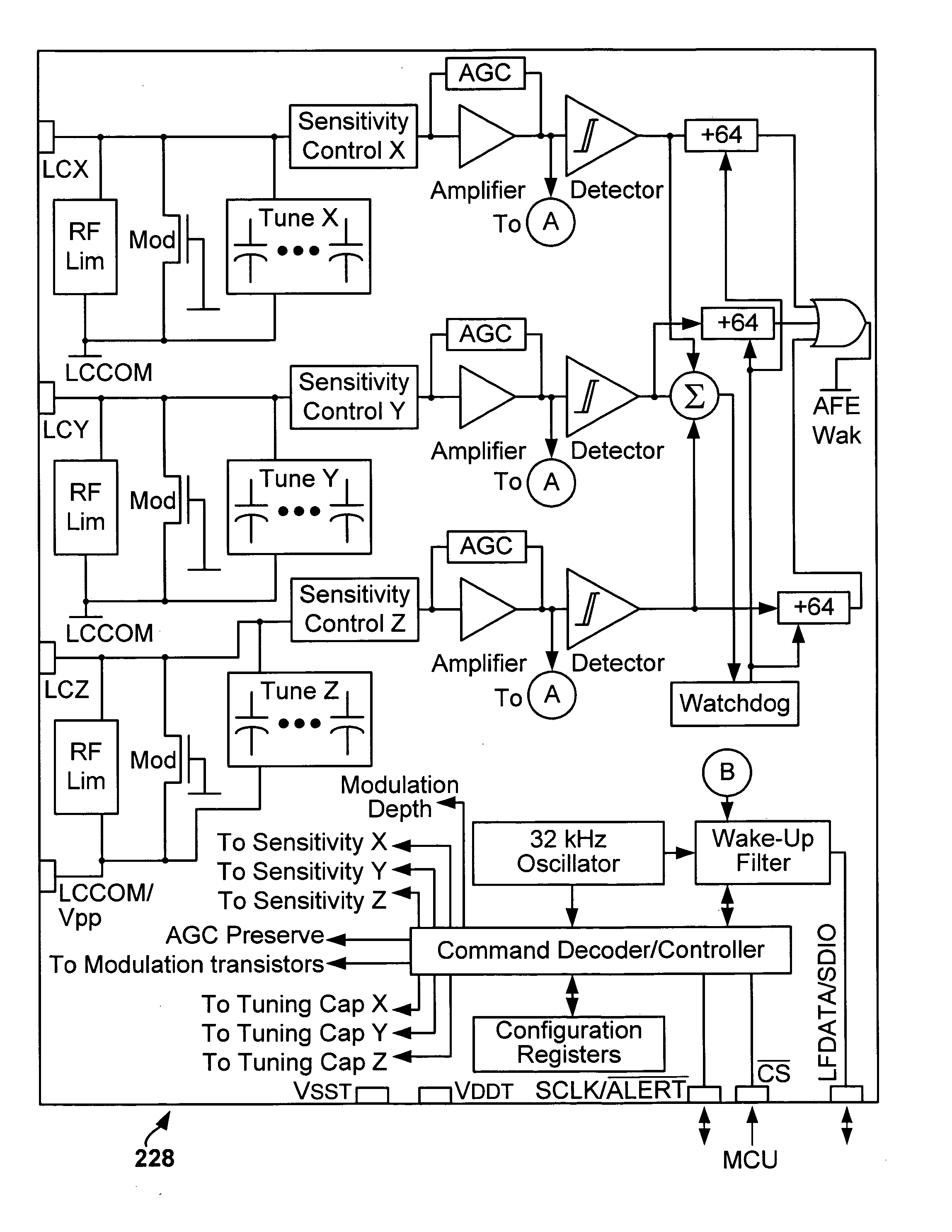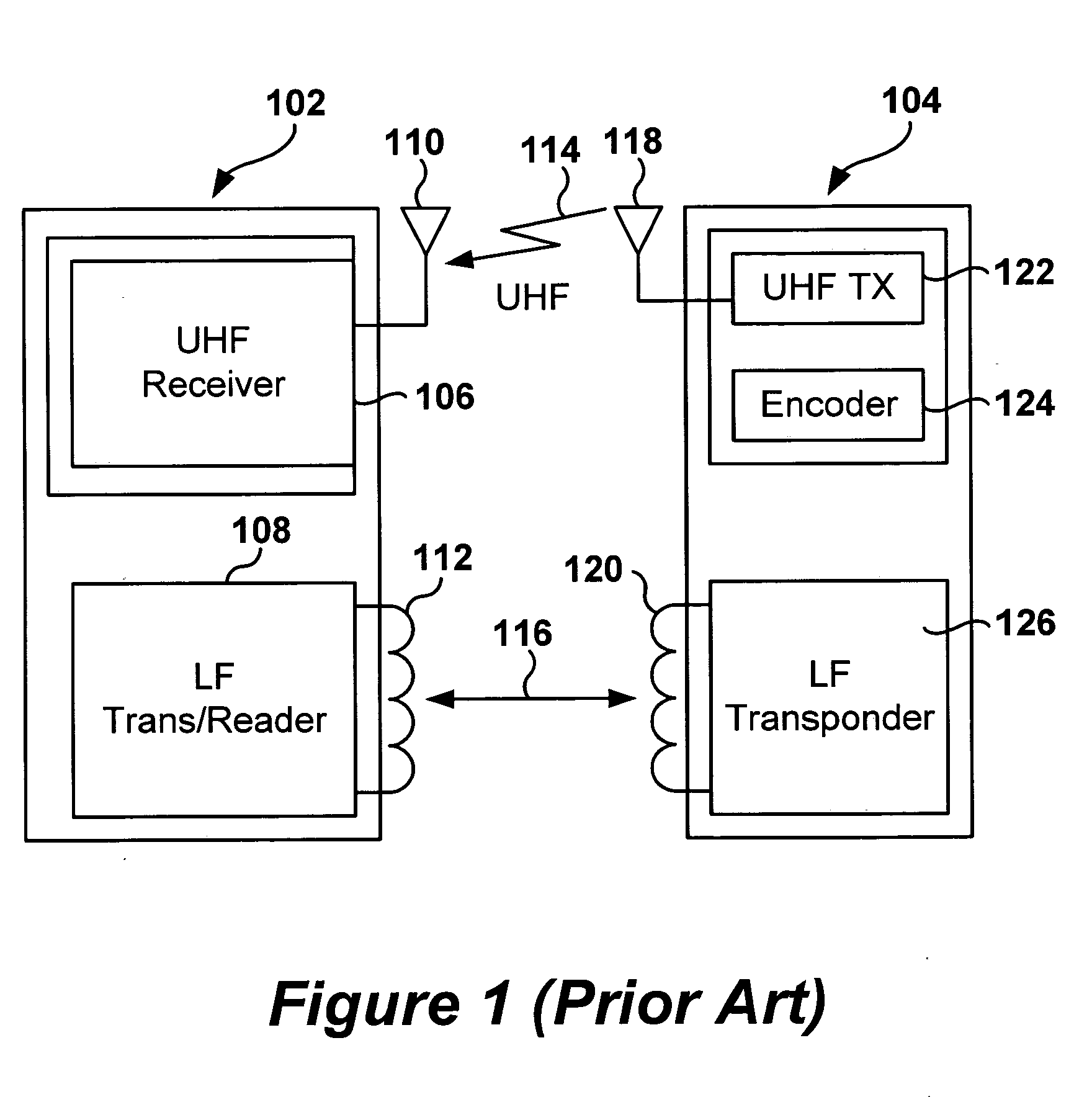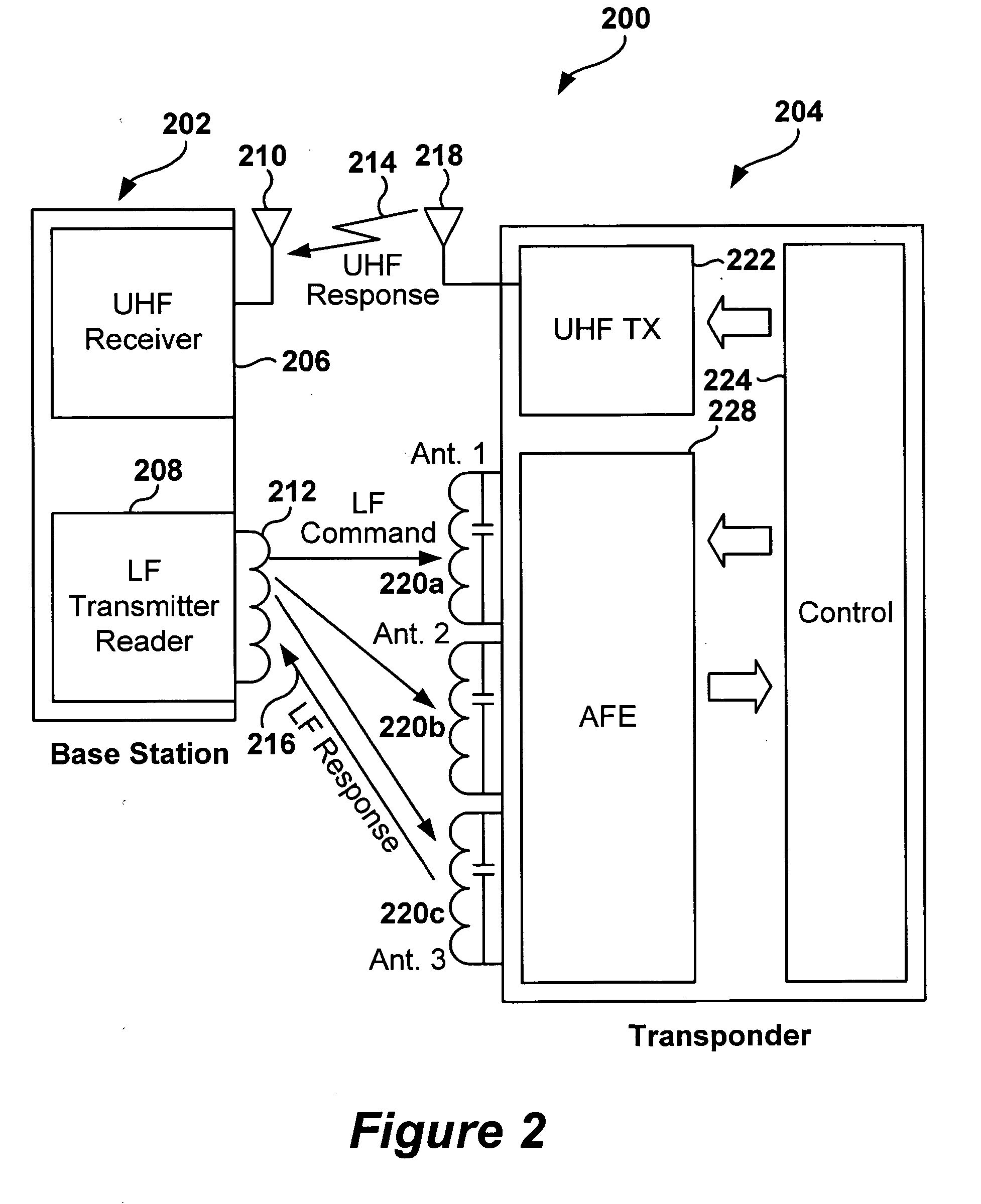Reducing false wake-up in a low frequency transponder
a low frequency transponder and false wake-up technology, applied in the field of reducing false wake-up in, can solve the problems of reducing battery operating time, false wake-up of rke transponders, increasing power consumption, etc., and achieves the effect of reducing battery life, maintaining communication, and reducing false wake-up
- Summary
- Abstract
- Description
- Claims
- Application Information
AI Technical Summary
Benefits of technology
Problems solved by technology
Method used
Image
Examples
Embodiment Construction
[0041] Referring now to the drawings, the details of exemplary embodiments of the present invention are schematically illustrated. Like elements in the drawing will be represented by like numbers, and similar elements will be represented by like numbers with a different lower case letter suffix
[0042] Referring to FIG. 2, depicted is a schematic block diagram of an exemplary embodiment of a remote keyless entry (RKE) system, according to the present invention. The RKE system, generally represented by the numeral 200, comprises a base station 202, which is normally placed in the vehicle in automobile applications, or in the home or office in security entrance applications, and one or more RKE transponders 204, e.g., key-fobs, that communicate with the base station 202. The base station 202 may comprise a radio frequency receiver 206, antenna 210, and a low frequency transmitter / reader 208 and associated antenna 212. The transponder 204 may comprise a radio frequency transmitter 222, ...
PUM
 Login to View More
Login to View More Abstract
Description
Claims
Application Information
 Login to View More
Login to View More - R&D
- Intellectual Property
- Life Sciences
- Materials
- Tech Scout
- Unparalleled Data Quality
- Higher Quality Content
- 60% Fewer Hallucinations
Browse by: Latest US Patents, China's latest patents, Technical Efficacy Thesaurus, Application Domain, Technology Topic, Popular Technical Reports.
© 2025 PatSnap. All rights reserved.Legal|Privacy policy|Modern Slavery Act Transparency Statement|Sitemap|About US| Contact US: help@patsnap.com



